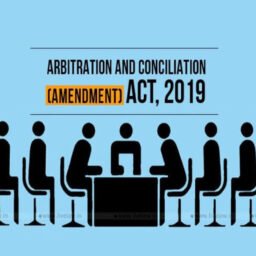INTRODUCTION
Mediation is an informal type of off the court settlement wherein the mediator plays a significant role in facilitating conversation between the two parties who wish to reconcile. The role of the mediator is not to find a party guilty or liable but merely to act as a catalyst to be able to preserve or even strengthen the relationship of the parties. The process of mediation is kept confidential and under the WIPO Mediation Rules, that information is not provided to anyone.
The process begins with a joint discussion about the proceedings to define the issues and ascertain the issue at hand. It is then followed by separate hearings between the mediator and each party. This gives an adequate chance to be heard and present their claim. It is a completely non-binding process and the parties may wish to step out of it at any time. However, if the issue has been resolved and parties have agreed, it becomes a legal understanding having a binding and enforceable effect.
ORIGIN
Mediation is not a new concept. Instead, it dates back thousands of years and has been prevalent across cultures. Even in ancient India, the King was placed at the apex of the judicial system and the mediation process was a prerequisite before approaching the King’s court.[1] A respectable elder of the community was supposed to mediate and in case the people did not reach an agreeable settlement, it was then adjudicated by the King himself.[2] Even after the advent of British rule in India, Alternate Dispute Resolution (ADR) was relied upon as they wanted to entrust this responsibility to the Indians while they continue colonial exploitation. Even contemporary Islamic law mentions the process of mediation.[3] Mediation was a way of life in ancient times, even though the process may have varied.
THE EVOLUTION OF MEDIATION
In ancient times, mediation was a completely voluntary process. The core issues of the dispute were understood and discussed during the meetings without any compulsion. Now in some jurisdictions, this process has become mandatory before resorting to litigation[4]. The aim is not to coercively make the parties arrive at a solution but to compel them to try mediation to resolve the issue at hand. The concern is to amicably arrive at the desired solution, even if it may not be through the desired procedure. There are dedicated mediation centres that are operating today even in the court’s premises.
Technology has played a considerable role in transcending the boundaries of the physical world. As the COVID-19 pandemic raged across the world, e-meditation was opted for by the parties. Parties communicate with the mediators through video conferencing platforms. This has proved to be a success due to globalisation and cross-country trades, businesses, etc.
ADVANTAGES
In other available options under Alternate Dispute Resolution (ADR) like conciliation and arbitration, the third party plays an active role in the facilitation. They provide their own opinions after assessing the dispute. On the other hand, mediation gives the parties tremendous scope to structure their desired terms of a customised settlement. It keeps the parties insulated from the stringent rule of law.[5]
The courts are overburdened from the backlog of cases and coupled with it is the tedious trial process of counter questioning, contentions and allegations. This delays judgement for a very long time. Whereas mediation on the other hand is a rapid process, the mediator adheres to the cause and effect and even the parties have due consideration for each other’s time. Thus, it saves both cost and time. As mediation is an informal process, the parties can back out anytime they wish to and it is upon the parties to accept or reject the terms. The principle of mediation is unanimity. This is what differentiates this process from any court structure where the pronounced judgement is binding upon everyone regardless of their subjective opinions.
THE STATUS OF MEDIATION IN INDIA
The United Nations Convention on Mediation gives this process the force of law. Among the 46 countries, India is also a signatory to the convention. It recognises the value of mediation in international trade disputes in an increasingly globalised world and also lays down rules applicable for the same.
According to the Rule 4 of Alternate Dispute Resolution (ADR) Rules 2004, “mediation is the process by which a mediator is appointed by the parties or by the court, as the case may be, mediates the disputes between them by facilitating conversations between the parties directly, or by communicating with each other through the mediator, by assisting the parties in identifying the issues, reducing misunderstandings, clarifying priorities, exploring areas of compromise, generating options in an attempt to solve the dispute and emphasizing that it is their responsibility for making decisions which affect them.”
The Commercial Courts Act 2015 mandates the parties to exhaust the remedy of mediation before instituting legal proceedings. There are provisions under CPC and ACA for both court-annexed as well as private mediations.
PITFALLS AND THE NEEDED REFORMS
The first thing that needs to be identified is the extent to which mediation can be used in place of litigation. The issues need to be demarcated so that the rule of law does not get dismantled in the pretext of alternatives.[6]The main interest of the parties during the process of mediation is to iron out their differences to not let a personal relationship fall apart. This defeats the ultimate purpose of being able to reconcile on definite terms and not merely compromising to meet ends.
Under the Arbitration and Conciliation Act, 1996, a basic framework for the conduct of conciliation proceedings has been laid down under which it is given that mediation as a flexible process permits the terms of a proposed settlement to be reformulated during the process. However, there is no defined cap on the same which paves way for a lot of hassles in reaching a binding end. Section 89 of the Code of Civil Procedure (Amendment) Act, 1999 gives the authority to the courts to formulate the terms of the settlement. The very purpose of mediation is the direct engagement of the parties in the process and this provision defeats it. This also increases the court’s burden further even before the process of mediation gets initiated.
Any person who undergoes the required 40 hours of training with at least ten mediations resulting in a settlement can be a mediator under Mediation and Conciliation Project Committee rules. However, to pose people’s trust in the process of mediation, fairly senior members of the bar should be provided training so that it gains a high degree of acceptability.
CONCLUSION
To make the laws enforceable, it becomes pertinent that the people are made aware of the recourse available to them in place of litigation and when it can be availed. Lawyers are often sceptical of mediation obviating litigation completely. However, this is a misconception as both have a separate cause of action. The cause of mediation needs to be advocated without the undue fear of being subjected to its tyranny. Ultimately it must be realised that the service being rendered is for the common good, and this goal must take precedence over any naive self-interest.
Future lawyers also need to be acquainted with this method by incorporating it into the curriculum. The change can only be steered when the legal and non – legal fraternity both come together to go beyond a stringent regime of litigation.
Author(s) Name: Navya Bassi (National Law University, Odisha)
References:
[1] S. Varadachariar, ‘The Hindu Judicial System’ (Lucknow University, 1996).
[2] Patrick Olivelle, Dharmasutras, ‘The Law Code of Ancient India’ (Oxford University Press, 1999).
[3] Dr. Vandana Singh, ‘Alternate Dispute Resolution in Islam: An Analysis’ (2017), ILI Law Review <https://www.researchgate.net/publication/346008028_ALTERNATIVE_DISPUTE_RESOLUTION_IN_ISLAM_AN_ANALYSIS> accessed 7 October 2021.
[4] Hemant K Batra, ‘Mediation Legitimacy and Practice’ (Eastern Book Company, 1st edition 2020).
[5] James A Wall, John B stark, and Rhetta L, ‘Mediation: A Current Review and Theory Development’ (2001) JSTOR <https://shibbolethsp.jstor.org/start?entityID=https%3A%2F%2Fidp.nluo.ac.in%2Fidp%2Fshibboleth&dest=https://www.jstor.org/stable/3176150&site=jstor> accessed 6 October 2021.
[6] Dr. Justice Dhananjaya Y. Chandrachud, ‘MEDIATION- realising the potential and designing implementation strategies’ <http://lawcommissionofindia.nic.in/adr_conf//chandrachud3.pdf>accessed 4 October 2021.









